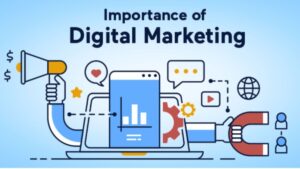Introduction to Buying Signals in Digital Marketing
Buying signals are the digital breadcrumbs that potential customers leave behind as they navigate through your online presence. These signals can take many forms. From website interactions and content engagement to social media activity and email interactions. By understanding and interpreting these signals. We can gain valuable insights into the mindset and intent of our target audience. Allowing us to tailor our marketing strategies accordingly.
Types of Buying Signals
There are several types of buying signals that digital marketers should be aware of:
- Website Interactions: This includes page views, time spent on the site, bounce rates, and conversion actions such as form submissions or product purchases.
- Content Engagement: Signals like content downloads, video views, and social media shares indicate a potential customer’s interest in your offerings.
- Social Media Activity: Interactions like likes, comments, and shares on social platforms can provide insights into your audience’s preferences and pain points.
- Email Engagement: Open rates, click-through rates, and responses to email campaigns can reveal how interested your contacts are in your products or services.
- Search Behavior: The keywords and phrases used by potential customers in their online searches can hint at their buying intent.
Importance of Understanding Buying Signals in Digital Marketing
Understanding buying signals is crucial for the success of your digital marketing efforts for several reasons:
- Personalized Targeting: By analyzing buying signals, you can segment your audience and create personalized messaging that resonates with their specific needs and interests.
- Improved Lead Generation: Identifying and nurturing potential customers based on their buying signals can help you generate high-quality leads that are more likely to convert.
- Optimized Marketing Campaigns: Tracking and interpreting buying signals can inform your marketing strategy, helping you allocate resources more effectively and improve the performance of your campaigns.
- Enhanced Customer Experience: Responding to buying signals in real-time can help you provide a seamless and personalized customer experience. Fostering loyalty and repeat business.
- Competitive Advantage: Leveraging buying signals can give you a competitive edge, as you can anticipate and meet the needs of your target audience more effectively than your competitors.

How Buying Signals Can Impact Your Marketing Strategy
Buying signals can have a significant impact on every aspect of your digital marketing strategy. From content creation and lead nurturing to channel selection and campaign optimization. By understanding and responding to these signals, you can:
- Refine Your Target Audience: Identify the most valuable segments of your audience and tailor your messaging and targeting accordingly.
- Optimize Your Content: Create content that resonates with your audience’s pain points and buying intent, increasing engagement and conversion rates.
- Enhance Lead Scoring: Use buying signals to prioritize and nurture leads that are more likely to convert, improving the efficiency of your sales process.
- Optimize Media Channels: Allocate your marketing budget to the channels and platforms where your target audience is most active and engaged.
- Improve Retargeting Efforts: Use buying signals to create highly personalized retargeting campaigns. That re-engage potential customers and drive them closer to conversion.
Recognizing and Interpreting Buying Signals
Recognizing and interpreting buying signals requires a keen eye and a deep understanding of your target audience. Here are some key factors to consider:
- Behavioral Patterns: Look for patterns in how potential customers interact with your online presence, such as the pages they visit, the content they engage with, and the actions they take.
- Demographic and Psychographic Data: Combine buying signals with demographic and psychographic data to gain a more holistic understanding of your audience’s needs and preferences.
- Timing and Context: Pay attention to the timing and context of your audience’s interactions, as these can provide valuable insights into their buying intent.
- Consistency and Frequency: Consistent or frequent engagement with your brand or products is a strong indicator of buying intent.
- Explicit Signals: Direct actions like form submissions. Product inquiries or cart abandonments are clear buying signals that require immediate attention and follow-up.
Tools and Techniques for Tracking Buying Signals
Tracking and analyzing buying signals can be a complex task, but there are numerous tools and techniques available to help you streamline the process:
- Web Analytics Tools: Tools like Google Analytics, Adobe Analytics, and Mixpanel can provide detailed insights into your website’s user behavior and engagement metrics.
- Customer Relationship Management (CRM) Systems: CRM platforms like Salesforce, HubSpot, and Zoho CRM. Can help you centralize and manage your lead and customer data, including buying signals.
- Marketing Automation Platforms: Solutions like Marketo, Pardot, and Eloqua can automate the process of identifying. Nurturing. And converting leads based on their buying signals.
- Social Media Monitoring Tools: Tools like Hootsuite, and Sprout Social. And Mention can help you track and analyze your audience’s social media activity and engagement.
- Heatmapping and Session Recording Tools: Tools like Hotjar, Crazy Egg, and FullStory can provide valuable insights into how users interact with your website.Including their scrolling, clicking, and browsing patterns.
Case Studies of Successful Implementation of Buying Signals in Digital Marketing
To illustrate the power of buying signals in digital marketing, let’s explore a few real-world case studies:
Case Study 1: Division Web Design and Capturing Buying Signals Division Web Design, a leading web design agency, recognized the importance of understanding buying signals to optimize their digital marketing strategy. By implementing a comprehensive tracking and analysis system. They were able to identify key buying signals such as website engagement. Content downloads. This allowed them to personalize their marketing efforts. Leading to a 35% increase in lead generation and a 25% improvement in conversion rates.
Case Study 2: Utilizing Contact Us Pages to Leverage Buying Signals A B2B software company noticed that Its Contact Us page was receiving a significant amount of traffic, but the conversion rate was relatively low. By analyzing the buying signals on this page. Such as the types of inquiries. The time spent on the page, and the device used, they were able to optimize the page’s content, layout, and form fields. This led to a 42% increase in contact form submissions and a 28% improvement in the quality of the leads generated.
Read also:- What are the marketing tools for digital growth strategy in 2024?
How to Optimize Your Website to Capture Buying Signals
Your website is the heart of your digital marketing efforts, and it’s essential to optimize it to effectively capture and leverage buying signals. Here are some key strategies to consider:
- Implement Robust Web Analytics: Ensure that you have a comprehensive web analytics solution in place, such as Google Analytics or Adobe Analytics. To track and analyze your website’s user behavior and engagement metrics.
- Utilize Heatmapping and Session Recording: Employ tools like Hotjar or Crazy Egg to gain deeper insights into how users interact with your website. Including their scrolling, clicking, and browsing patterns.
- Optimize for Mobile: Ensure that your website is mobile-friendly and provides a seamless user experience, especially since an increasing number of your potential customers are accessing your site on their smartphones and tablets.
- Enhance Content Engagement: Create compelling and informative content that resonates with your target audience. And track their engagement through metrics like time on page. Content downloads, and social shares.
- Optimize Your Contact Us Page: Carefully design your Contact Us page to capture and leverage buying signals. Such as the types of inquiries, the time spent on the page, and the device used.

Utilizing Contact Us Pages to Leverage Buying Signals
Your Contact Us page is a crucial touchpoint for potential customers. And it presents a valuable opportunity to capture and leverage buying signals. By optimizing this page, you can gain valuable insights into your audience’s needs and intent. And use this information to enhance your overall marketing strategy.
Here are some strategies to consider:
- Collect Relevant Information: Ensure that your Contact Us form captures the right information, such as the nature of the inquiry. The customer’s timeline, and their budget or purchase intent.
- Analyze Form Submissions: Closely monitor the types of inquiries you receive. As well as the time of day they are submitted, to identify any patterns or trends that emerge.
- Optimize Form Fields: Continuously test and refine your form fields to ensure you’re collecting the most relevant information from potential customers. Additionally, consistently optimizing form fields enhances data quality.
- Streamline the User Experience: Make sure your Contact Us page is easily accessible. Then, navigate, utilize, and ensure a seamless submission process with a clear call to action.
- Integrate with Your CRM: Ensure your Contact Us page is seamlessly integrated with your customer relationship management (CRM) system. Facilitating centralized and efficient management of lead data.
Frequently Asked Questions
| Question | Answer |
|---|---|
| What are buying signals? | Buying signals are indicators that a potential customer is interested in purchasing a product or service. |
| How can I identify buying signals? | Look for website visits, engagement with content, social media interactions, and email opens/clicks. |
| Why are buying signals important? | They help you understand customer intent, allowing you to tailor marketing strategies to increase conversions. |
| What tools can help track buying signals? | Use tools like Google Analytics, HubSpot, and heatmapping tools to track and analyze buying signals. |
| How do buying signals improve lead nurturing? | By recognizing interest levels, you can send targeted content and offers, enhancing lead nurturing efforts. |
| Can social media activity be a buying signal? | Yes, engagement such as likes, shares, and comments can indicate interest and intent to buy. |
Conclusion
In the dynamic world of digital marketing, understanding and leveraging buying signals is crucial for success. Therefore, recognizing the various types of buying signals and interpreting their significance is paramount., marketers can achieve better results. By implementing the right tools and techniques, you can gain a competitive edge, thereby driving more effective marketing campaigns.
By doing so. You can create personalized, high-performing marketing strategies, thereby delivering tangible results and fostering long-lasting customer relationships. Integrating division web design into your approach can further enhance. Your capacity to effectively engage with your audience, ensuring seamless online experiences that enhance conversion and retention.
Ready to take your digital marketing strategy to the next level? If so, contact our team of experts to learn how we can help you leverage. Buying signals and optimizing your online presence for greater success. Get in Touch






